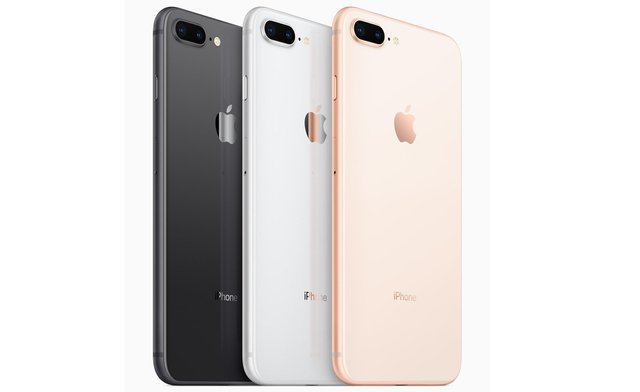The new iphone 8
Introduced on September 12, 2017, the iPhone 8 and the iPhone 8 Plus represent a "huge step forward for the iPhone," according to Apple CEO Tim Cook. The two devices "improve on everything we love about iPhone" with overhauled internals and a tweaked design, but the changes introduced are not as dramatic as the changes brought to the iPhone X, Apple's new high-end flagship device being sold alongside the iPhone 8 and iPhone 8 Plus.

The iPhone 8 and iPhone 8 Plus mix a little bit of the iPhone X with a little bit of the previous-generation iPhone 7 and iPhone 7 Plus. The overall design is the same as the design of the previous-generation devices, but the iPhone 8 and the iPhone 8 Plus adopt new glass bodies sandwiched in a matching aluminum frame. Unlike the iPhone X, there continues to be a Touch ID Home button and thick bezels at the top and bottom of the display.
Available in three colors, Silver, Space Gray, and a new Gold shade, the iPhone 8 and the iPhone 8 Plus feature the most durable glass ever in a smartphone in a reinforced steel and aluminum structure that is IP67 water and dust resistant. The stereo speaker setup in the device has been updated to be 25 percent louder with deeper bass.
The iPhone 8 continues to feature a 4.7-inch display, while the iPhone 8 Plus features a larger 5.5-inch display. Both displays have been upgraded with True Tone support, designed to adapt color temperature and intensity to the ambient light in a room for a more natural, paper-like viewing experience. 3D Touch and P3 wide color support for a greater rang of colors continue to be available.
Apple chose glass for the body of the iPhone 8 and the iPhone 8 Plus to enable a new Qi-based inductive wireless charging feature, which allows the two devices to be charged when placed atop any Qi-certified inductive charger.
Inside the iPhone 8 and iPhone 8 Plus, there's a new six-core A11 Bionic chip, which Apple says is the smartest, most powerful chip ever introduced in a smartphone. There are two performance cores that are 25 percent faster than the A10 Fusion chip in the iPhone 7, and four efficiency cores that are 70 percent faster.
With a new second-generation performance controller, all six cores can be harnessed at the same time for much improved speeds when handling multi-threaded workloads. There's a new Apple-designed 3-core GPU that's 30 percent faster than the previous-generation GPU, and two of the cores, the Neural Engine, make machine learning tasks faster than ever.
The larger iPhone 8 Plus continues to offer a dual-lens camera setup with both an f/2.8 telephoto lens and a f/1.8 wide-angle lens, both of which have new sensors. Optical image stabilization continues to be available for the iPhone 8 and the wide-angle lens in the iPhone 8 Plus.
Apple's Portrait Mode, limited to the iPhone 8 Plus's dual-lens camera system, has been updated with a new Portrait Lighting effect to dynamically change the lighting in an image to mimic studio lighting techniques.
With the new image signal processor and a new Apple-designed video encoder that enables faster video frame rates and real-time image and motion analysis, video capture on the iPhone 8 and iPhone 8 Plus is better than ever. 4K video at 60 frames per second is supported, as is 1080p slow motion video.
Apple designed the iPhone 8 and the iPhone 8 Plus with augmented reality in mind. The cameras are calibrated for AR, there's a new gyroscope and accelerometer to enable more accurate motion tracking, and the A11 Bionic offers world tracking and scenes while the GPU renders realistic graphics and the image signal processor offers real-time lighting estimation. iOS 11 introduces hundreds of new AR apps designed using ARKit, all of which can be experienced on iPhone 8 and 8 Plus.
Apple is offering the iPhone 8 and iPhone 8 Plus in 64 and 256GB capacities, starting at $699. The two phones officially launched on Friday, September 22.
